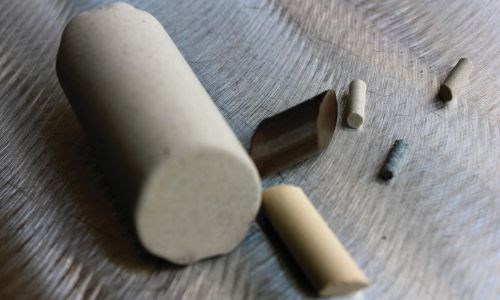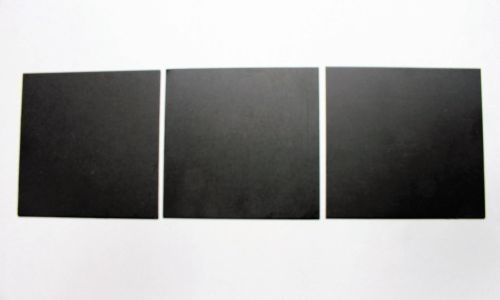Pre-Anodize Vibratory Finishing
What vibratory media would provide a good visual finish on clear and black anodized aluminum parts?
Q. We need a good visual finish on clear and black anodized aluminum parts. What vibratory media would you recommend? –S.G.
A. Small, 3/8-inch plastic cones or ceramic cylinders produce a similar but slightly varied satin/matte, uniform finish when anodized. Larger vibratory media will produce a larger-patterned matte finish, giving the surface a more mottled appearance.
Bead blasting has been used to produce a standard, mechanical pre-anodized finish. Vibratory processes with smaller media produce finishes close to bead blasting while automating the process.
A 40- to 60-min vibratory cycle time is required to obtain a uniform finish, however, surface scratches and machined cutting lines require longer cycle times for removal.
A flow-through soap compound system will brighten the parts and keep them clean.
A secondary, 3- to 4-mm ceramic porcelain burnishing ball process also will brighten the parts and produce a brighter anodized finish. These surface burnishing brightening results are vastly improved after a plastic vibratory media process that smoothes the surface.
A large percentage of anodized parts are clear or black. Above are examples of parts run in plastic, ceramic and porcelain burnishing media, and anodized. As you can see, finishes are similar.
Different alloys of aluminum, the anodizing color, and soft or hard anodizing processes will produce varied color results, and these also affect the visual results of the vibratory media.
Standard etch cleaning prior to anodizing will remove 0.0001 to 0.0002 of the surface material, reducing the effects of mechanical finishing. Therefore, for a more defined mechanical finish effect, a bright, buffed or clean finish may not be etch-cleaned prior to anodizing.
The vibratory process can be controlled to remove from 0.0001 to 0.001 of the surface material. The soft anodize process thickness is 0.0002 to 0.001, and the hard anodize thickness varies from 0.0005 to 0.002. Half of the anodize thickness is surface penetration and half is surface build up. These process tolerances are only a guide, however. Consult with your anodizer on very tight surface tolerances.
Related Content
-
Blast Nozzle Features Enhanced Noise Reduction
Kennametal adds noise-reducing Blast Ninja to portfolio of abrasive blast nozzles.
-
Hubbard-Hall Technical Team Adds Senior Chemist to Staff
David Keller is joining the Hubbard-Hall technical team as a senior chemist.
-
Blasting Beads Made of Lead-Free Natron Glass
SwarcoBlast blasting media are made for use in a multitude of surface refinement applications.




















